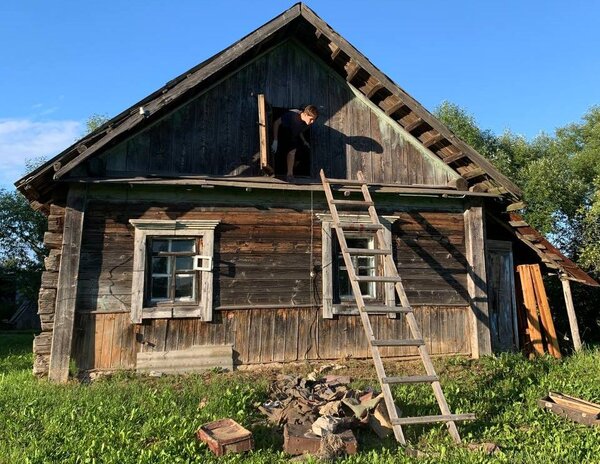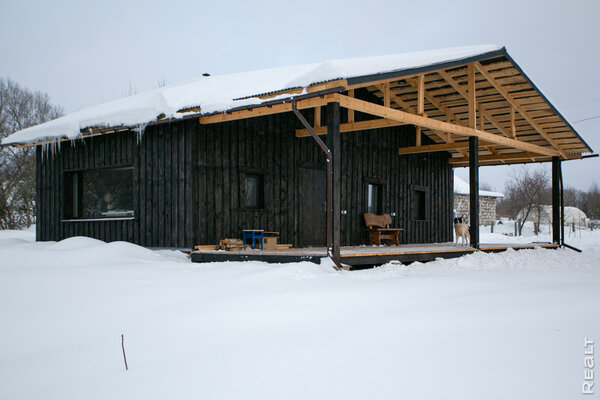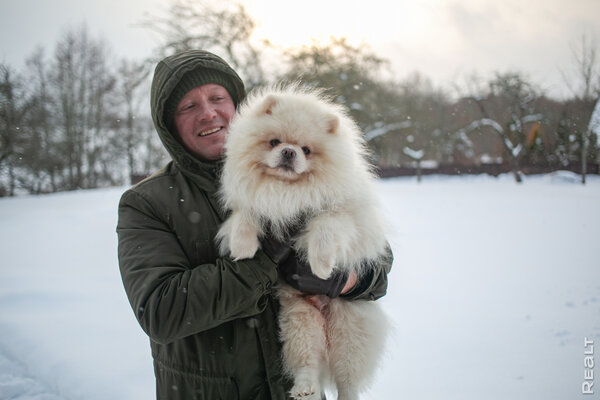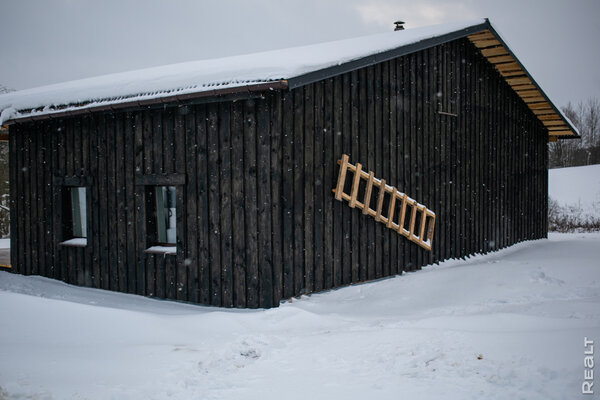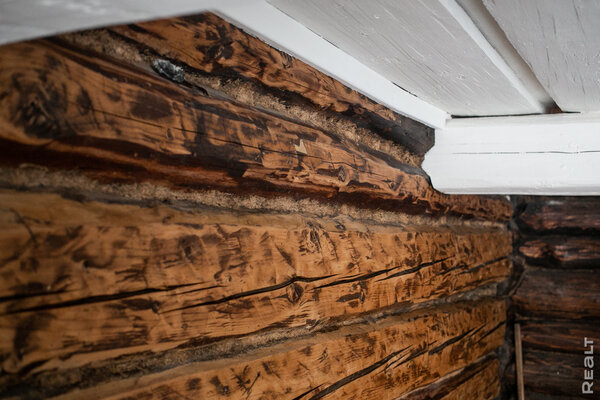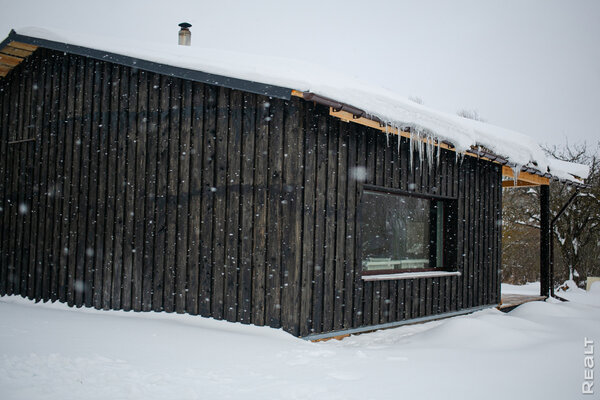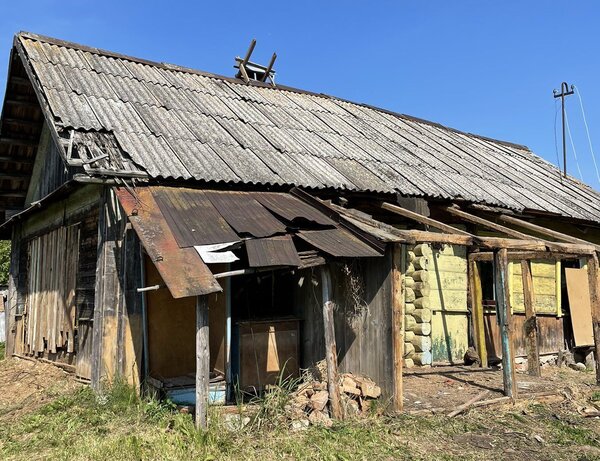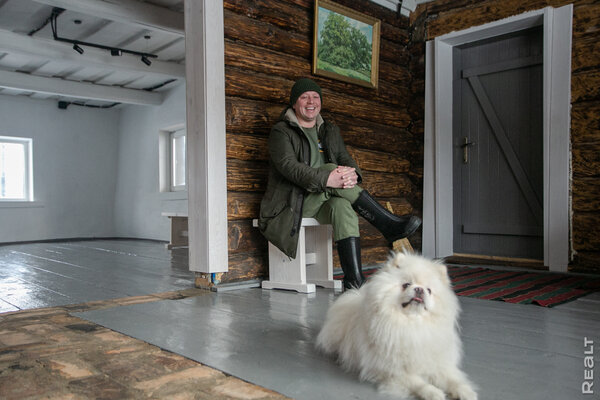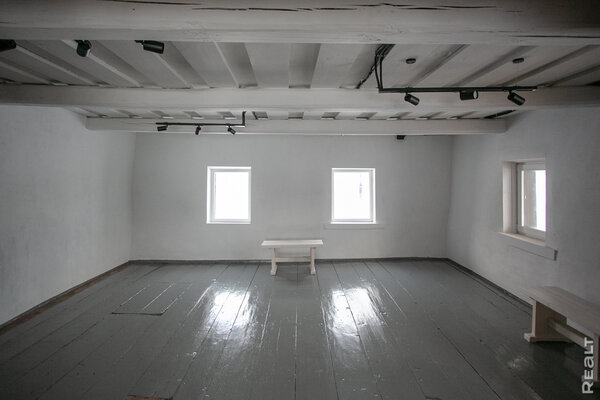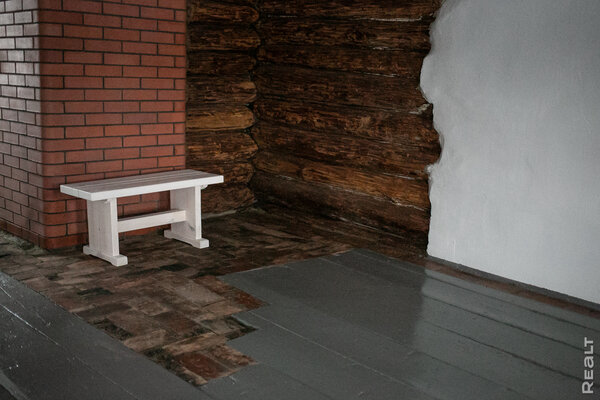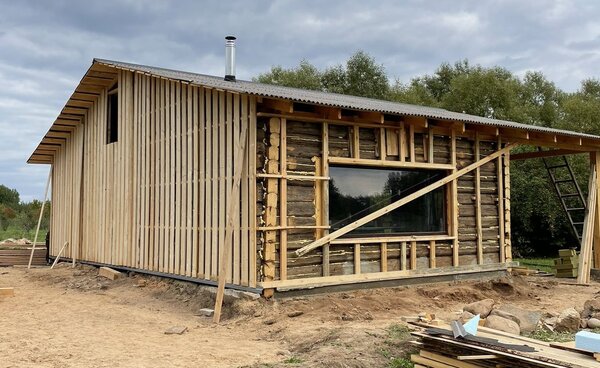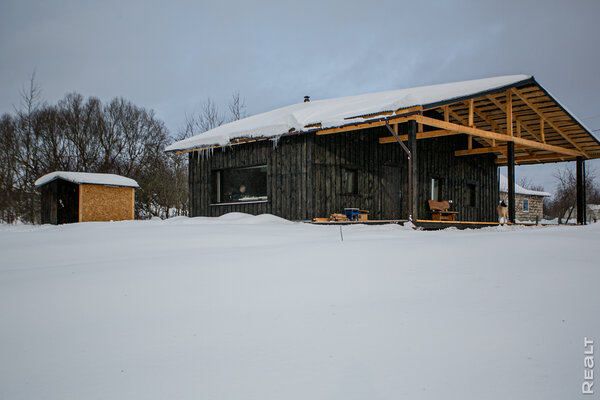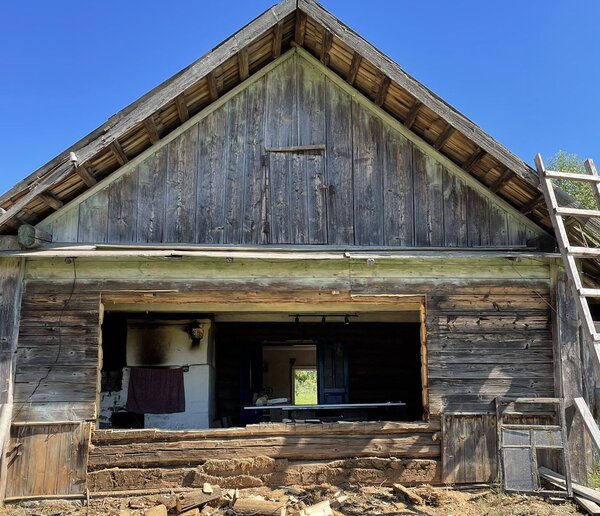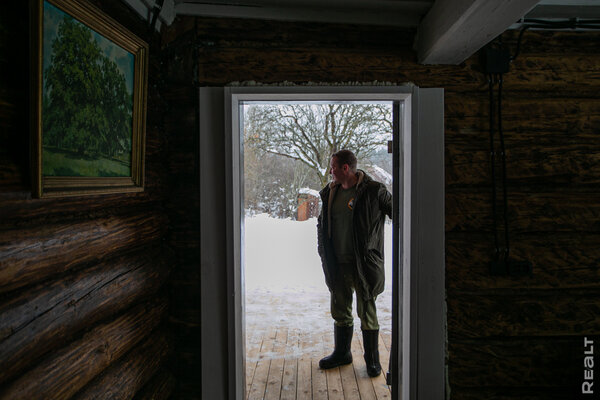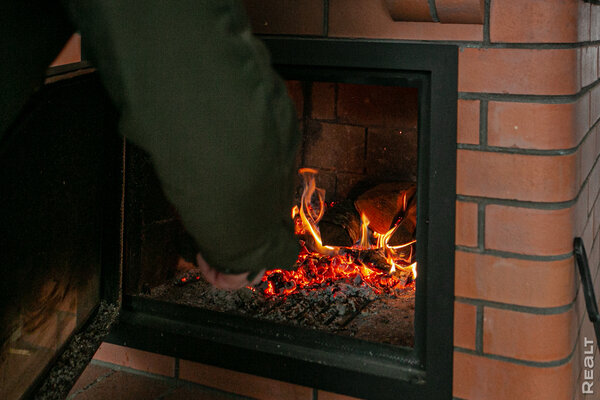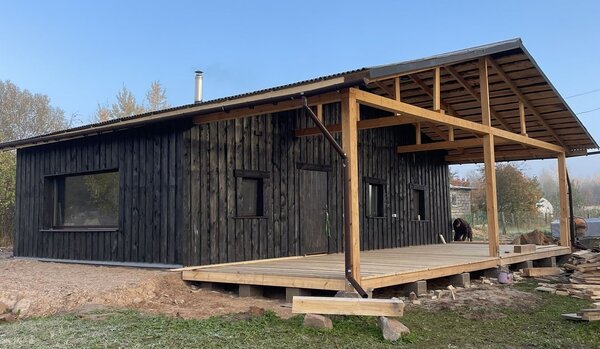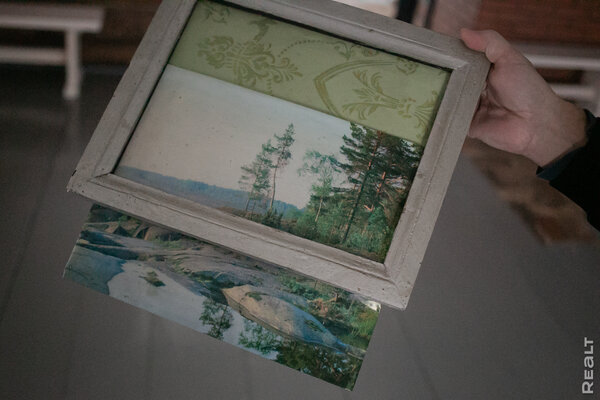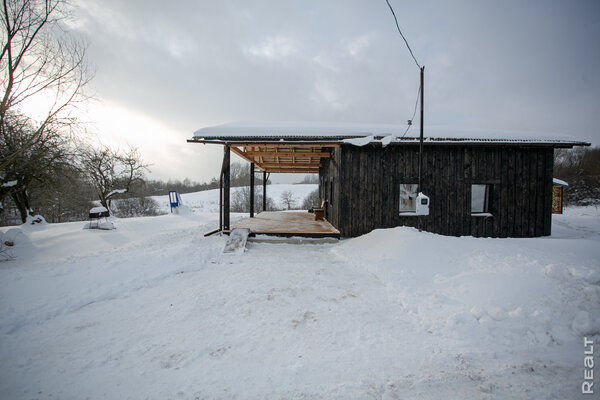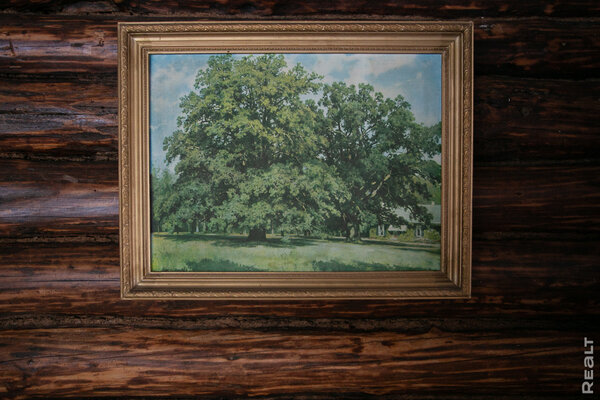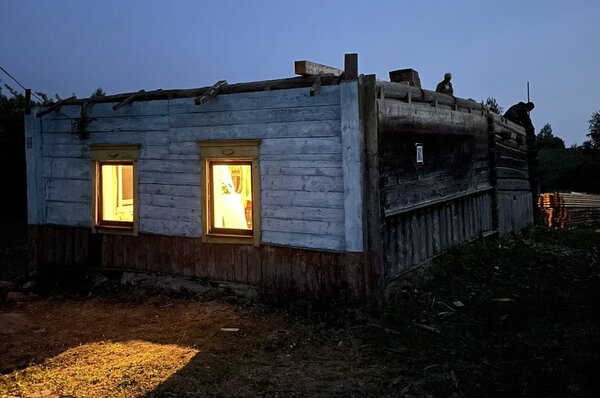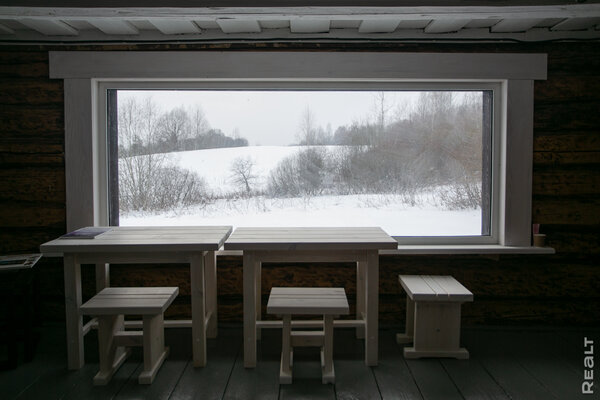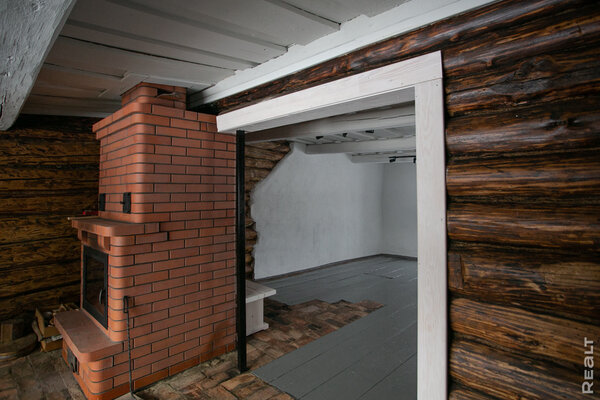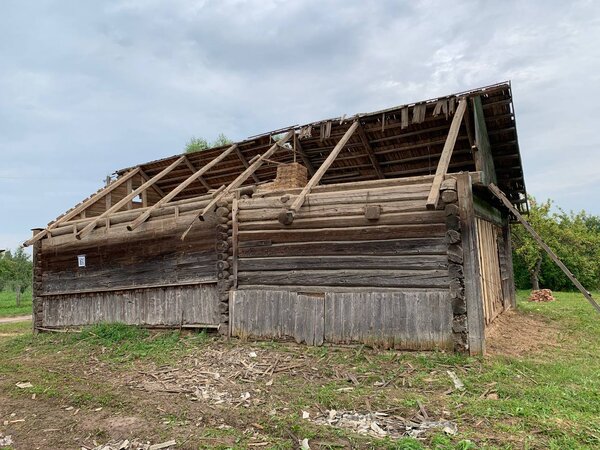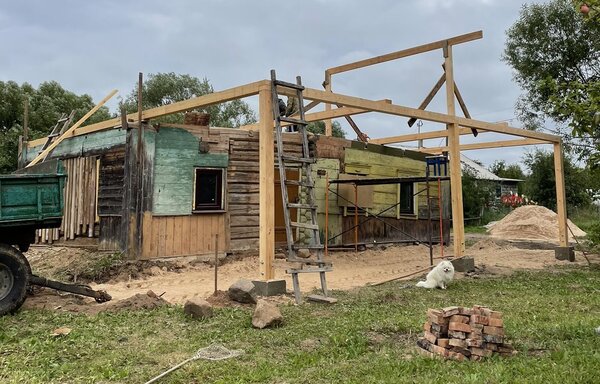ARTICLE ABOUT US ON REALT.BY
Our guests from realt.by wrote an article about us and filmed a report, which can be viewed at www.youtube.com/watch?v=g49XsdxXxbw
https://m.realt.by/news/article/34986/?utm_source=telegram&utm_medium=social
"Better than "potatoes, TV and fishing." A Minsk resident bought an old hut and converted it into something unusual
39191
19.12.2022 Author: Stanislav Zhuravlevich, photo: Daria Buryakina, video: Yana Sionikhina Many will say: well, what a whim — to make an art gallery from an old hut in a remote village far from Minsk? But our hero today thinks differently — art has no boundaries and canons. Today we went to Cheresovo to see what he did.
Oh, old acquaintances!
10 years ago, Arthur and his wife, artist Lora Pavlova, bought an old house in a village on the shore of the picturesque lake Cheresovo near Lepel. There was no point in repairing it — the years had not spared it, the logs were thoroughly rotten. Therefore, a new house was built in its place, a little later — a bathhouse. However, our reader is already familiar with this story — we wrote about the construction site on the shore and the philosophy of life by the water far from the city in February. But less than a year has passed and we are back in Cheresovo — we are looking at a new object. This time — an art gallery and at the same time an artist's studio, the basis for which was an old abandoned hut on the edge of the village. — There was an abandoned old hut 100 meters from our house, — Arthur tells the background. — 9 years passed by, not paying attention to her. Last year, my hunter neighbor and I went to explore the neighborhood. And from the hill, on the other side of the village, this house has a completely different view — it stands on a hill with stunning views of the lake. I shared my observations with my wife. She then said that she did not have a normal workshop in which she could work. And then we thought it would be a good option. Therefore, in June we bought this hut. The idea of the workshop developed — there were thoughts about creating an art gallery. But the gallery itself, for itself, for the neighbors? Of course not. As a result, the idea finally took shape: it will be the master's house and the international gallery at the same time — in the old village, in the old house. And it's great that people from different countries will come here, paintings by different artists will be exhibited.
The second life of the old house
What was the house like? It was an ordinary wooden hut with a cold extension. No one lived in it for a long time, the plot began to overgrow with bushes and trees — in general, a familiar picture for abandoned housing. First of all, we got rid of the junk that had accumulated in and around the house. And there was a lot of it — the house was built back in 1950.
Upon a detailed inspection, it turned out that the roof was unsuitable for further operation — it leaked, some structures rotted and they need to be changed. The extension was included in the list of priority demolition, as a large terrace was planned in its place according to the project. As a result, a new gable roof appeared above the house, which is pushed forward a few meters to cover a spacious terrace.
They did not bother with the facade — the old log house was sheathed with an ordinary pine edged board using vent facade technology. — In the district, old houses are painted in traditional colors — yellow, green, blue, — says Arthur. — But since we undertook to make a gallery, then we need to look especially unusual against the general background. So I painted the facade black and I like the way the house looks now. There is no canon of what the gallery should look like, so we were able to do everything the way we liked. For example, when replacing old windows, installers found that they were not in the same plane with the facade, "littered". And they wanted to put new ones already on the level. I thought it would be right that the new windows would be in the same position as the old ones.
The appearance was also influenced by a panoramic window almost the entire width of the wall on the lake side. To install it, I had to cut out a large piece of wall between two native window openings. Thanks to this, there is a lot of natural light inside. And the interior looks much more interesting. And what's inside?
There was also enough work inside. First, they got rid of the old furniture, then they removed the "cultural layer" of fiberboard, newspapers and wallpaper from the walls.
— There were several framed reproductions in the house, — says Arthur. — They were not thrown away, they will be part of the history of a simple Belarusian hut that turned into an art gallery.
The space of the house was divided into two parts — in the first there was a kitchen with a large Russian oven, in the second — a living room-a bedroom with a stove. In the first part, the walls were bared to the logs of the log house. They decided to leave them in the interior — as the spirit of antiquity and part of the lived history of the house. Arthur says that it was not easy to clean them to a smooth state — the grinding took several weeks, the work was heavy, dusty. But the owners liked the result. The logs were covered with impregnation and we see the tree in all its natural beauty — with all the flaws, traces of shashel, knots. The walls look as natural and atmospheric as possible, they are interesting to look at, nice to touch with your hands. In the second half, the walls were plastered with clay on wooden shingles. They decided to repair the plaster and paint it white. They did not bother with leveling, so in the interior we see smooth white walls, but with all the irregularities.
— We left the window sills on purpose — somewhere they are hidden under the plaster, and somewhere they appear, - explains Arthur. — On the one hand it looks careless, but on the other hand — why not?
Classic ceilings — beams with overlapping wide boards. They were simply cleaned and painted white. In order not to heat the street, Arthur insulated the ceiling from the attic side.
An important part of the interior is a new stove—fireplace. This is the main source of gallery heating. Arthur did not master the profession of a stove maker, he invited a specialist. Arthur does not regret the two thousand dollars spent, the oven turned out to be excellent — compact, quickly warms up the entire gallery, retains the accumulated heat for a long time.
In its place there used to be a Russian oven, but it took up much more space. Its functionality in the new concept turned out to be unclaimed. In addition, it was old, possibly emergency, so it was dismantled. Old grubka was also turned into a pile of bricks in the yard. However, soon they moved back into the house, however, in a different guise. The fact is that in place of the stoves there were gaps in the wooden floor. As a result, the solution was this — to pave them with an old, but very durable stove brick flush with the wooden floor. After impregnation with a hydrophobizer, they do not get dusty, it is easy to remove garbage from them.
On the floors are wide boards with a thickness of 8 cm. It didn't make sense to change them to something more modern - such floors will last forever. Therefore, they were simply repainted in light gray.
The owner did all the dirty and hard work himself, only sometimes attracted one or two assistants. But the mistress of the workshop herself was engaged in painting the walls and floors. — Laura, when she saw how I painted the facade, said that she would paint the inside herself, she did not entrust me with this work, — Arthur laughs.
The final touch in the reformatting of the old house into a gallery is the installation of track lights and the laying of new wiring in fire hoses. All the work took four months. However, I had to work almost daily, from morning to evening.
There is still work to be done around the house for further improvement, but the necessary minimum is already there — parking is provided for guests, toilets are installed. Who needs it? The locals followed the efforts of the Minsk resident with curiosity — what will be done from the old hut, which, in a good way, should have been used for firewood? — When I told them that it would be an international art gallery, I met with a frank misunderstanding, — says Arthur. — For them it is not clear how a gallery can be located in a village, well, what is it? Will there just be paintings hanging? And where are the potatoes? But this does not upset our heroes much. And here it is worth remembering that after the construction of the house on the shore, Arthur and Laura did a lot to diversify the lives of local people. First they had a whole field of lavender. The question "why not potatoes" left the agenda when the annual summer festival "Lavender Lepey" began to be held — a lot of guests come, music sounds, people communicate, have fun. And then there were no empty houses left in the village — everything was sold out. Thus, the place began to come to life, filled with meanings more complex than "potatoes, TV and fishing".
— We always create something new: first the lavender field, now the gallery. We are trying to show people that there is something more interesting than the usual way of life. And I think that the gallery is not our last project.
By the way, the opening of the gallery / house of the master "Lora Pavlova gallery Lepey" is scheduled for December 24.2022"

